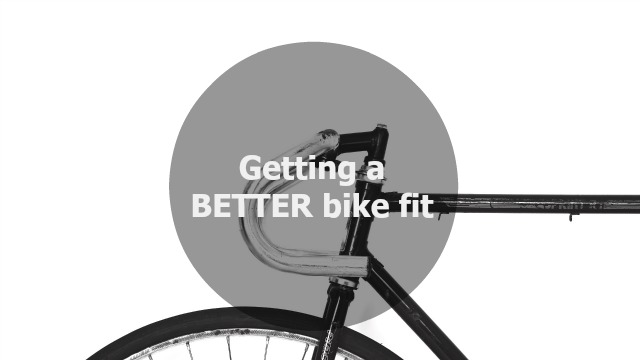 Although you can buy clothes from a shop and wear them straight off the hanger, you never truly feel comfortable until you wear something that’s designed for your body shape – clothes that truly fit. You may have to pay extra but the comfort is definitely worth it.
Although you can buy clothes from a shop and wear them straight off the hanger, you never truly feel comfortable until you wear something that’s designed for your body shape – clothes that truly fit. You may have to pay extra but the comfort is definitely worth it.
Cycling is no different. Nowadays, you can tailor your ride further, synchronising your cycle to your body type and shape. Essentially, this means altering your ride so that you can sit more comfortably, which in turn means you can ride for longer. A bike fit is generally performed for new riders or for people who aren’t comfortable with their current set up. But what is a bike fit and how do you improve yours?
What is a bike fit?
Although it can vary, a bike fit is where an expert analyses your body shape and your cycle, adjusting it to help you ride more comfortably, commonly performed on road bikes.
As opposed to getting ‘sized’ for a new bike, a fitting takes into account you as a rider and then tailors the cycle. Where sizing is a rule of thumb, fitting is a more exact science based on an expert assessment.
Why get a bike fitting?
Beginners can benefit from a bike fitting as they won’t know how a bike fits and feels. An expert can give advice on starting off properly from a comfortable position. A fitting also benefits a more experienced rider who has injuries or is uncomfortable with their current fit. Finally, competitive cyclists can get marginal gains in endurance and speed by tweaking their ride and adjusting their position.
Things to avoid
During a fitting, you might end up being upsold a variety of objects you don’t need or you can purchase elsewhere, like insoles and a new saddle. Take any recommendations with a pinch of salt, as you can often find cheaper alternatives – but you may also genuinely need things like a new stem.
Doing it yourself
Of course, not everyone can afford to shell out on an expert fitting. With that in mind, you can still emulate some of the key aspects of fitting by taking a few measurements and adjusting your bike to suit.
Saddle
Riding with a seat too low can impact your ability to cycle and also can affect knee health. I certainly get knee pain if my saddle is not set at the right height and to prevent long term injuries you really do want your saddle to be right. To get the correct fit, you’ll need the saddle to be high enough so that your leg is straight with the heel touching the pedal at its lowest point. You’ll also need to ensure it isn’t so high that your heel is above your toes at the bottom of the pedal stroke.
Saddle setback
A saddle moved backwards or forwards can have a big impact, alleviating or increasing pressure on your pelvis depending on which position suits you best. You should have your saddle positioned so the front of your kneecap is directly over your pedal spindle when you’re mid-stroke. You may need a second person to see if your knee is in line with the spindle.
Handlebar reach
The final thing to adjust for getting a better bike fit are your handlebars. Reaching too far for handlebars disrupts your weight distribution and reaching too short means you’re too upright. Your elbows should bend slightly when your hands are on the hoods. You’ll need to measure and record reach from the seat post under the saddle to your headset – but this is one measurement you’ll probably need to get right when first buying the bike as it’s hard to tweak on something you already own. Swapping a stem helps but try and get it right before you buy.
Personally, I’m a big believer in buying the right sized frame from the outset, where hopefully, if it’s the correct sized frame for you, the components of the bike should be designed to fit your body frame and give you a comfortable bike ride where only a bike fit few tweaks may be needed.
Do you have any hints or tips for getting a great bike fit?
*This post is in collaboration with Leisure Lakes Bikes.

Great article, Donna. I train aspiring cyclists down under in Melbourne (my brother however, is a mad cyclist hooning around Manchester) and reckon a decent bike fit is worth its weight in injury prevention and comfort of riding.
I’ve found that when you get stronger and fitter on the bike it’s not a bad idea to occasionally get a re-fit, or should that be a re-bike-fit?! Initially you may need to be a bit more upright on the bike and then as you get stronger more able to drive more from the hips and sustain a more steady and strong core position. Keep up the great work!
Hi Sophie, thanks for stopping by and for leaving some great tips.